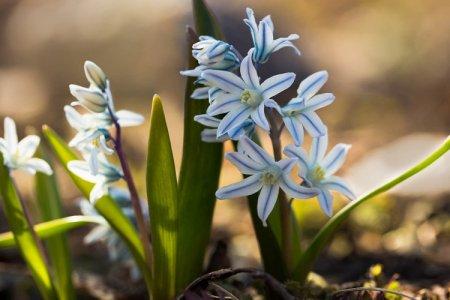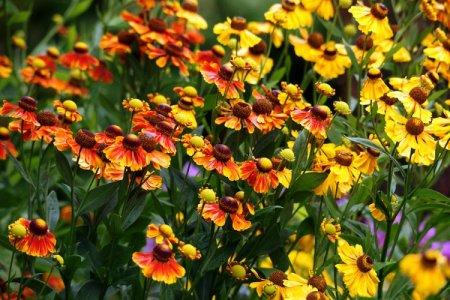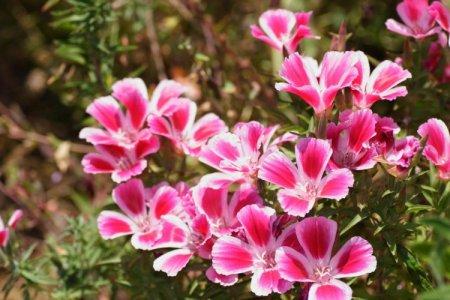
Viola looks like the closest relative of the violet, and it really is. But it differs in brighter and more variegated colors, because different petals are intertwined in one bud. Blue and purple are no longer the only options. Let's tell you more!
general information
Perhaps you know a viola called pansies. Even at monasteries, these unpretentious, but very beautiful and graceful flowers were cultivated. And over time, breeders got down to business and brought out many spectacular garden forms.
Viola has dark serrated leaves, most often heart-shaped. They are quite large and assembled into an outlet. Flowers are very small, about 2 cm, and sometimes quite impressive - up to 10 cm in diameter. They are always asymmetrical because the three petals point upward.

Viola types
Even before the artificial breeding of decorative varieties, dozens of varieties of viola already existed in nature. And it is not surprising, because it is found all over the world!
Viola Wittroca
By far the most popular viola variety, and it is also a hybrid of several species at once with a tricolor violet. In fact, it was this flower that was originally called pansies for its characteristic color. There are dwarf, giant and ampelous varieties.

Scented Viola
The most fragrant look is most reminiscent of the classic violets of blue and purple hues. Scented viola is a star in perfumery, cosmetology and folk medicine.

Viola Williams
Another hybrid, but based on the Vittrock viola itself. The height of the bushes reaches 30 cm, and the diameter of the flowers is up to 4 cm. The colors are bright and variegated, but without characteristic eye spots.

Horned viola
This is a perennial species with a characteristic growth near the bud, due to which the unusual name appeared. Bushes grow up to 25 cm and are densely covered with flowers 5 cm in diameter.

Moth viola
It is also called Sororia, and it is a small primrose up to 20 cm in height. With proper care at the end of summer, moth viola can bloom again.

Spotted viola
In addition to the one- and two-color varieties, there are spectacular variegated forms. Terry varieties and varieties with corrugated petals are especially good.

Viola care
Taking care of a viola is quite simple if you initially maintain a balance in everything. Moderate watering, moderate lighting and moderate fertilizing are what you need!
Temperature
Viola is a thermophilic plant that prefers temperatures around 15-20 degrees. Short-term rapid drops have almost no effect on the flower, but prolonged drought or frost can be destructive.

Lighting
Light partial shade is best for viola. An excess of the sun provokes burns and leads to a decline in flowering. And because of its shortage, the buds become small and poorly open.

Watering
Young bushes and seedlings need to be moistened constantly, but at the same time avoiding stagnant water. Adult bushes are watered only as the soil dries. Spraying viola is not necessary, and generally it is not necessary to wet the ground part of the plant.

The soil
When planting seedlings, we recommend using a ready-made soil mixture for violets. It can also be added to the garden soil when preparing the site. Apply fertilizers to the poor soil in advance.

Fertilizers and feeding
Viola is fed every 2-3 weeks throughout the season. Use mineral fertilizers for flowering plants, violets and saintpaulias, or just a mixture based on potassium and phosphates.

Pinching and trimming
To keep the viola bushes neat and even, you can pinch them as they grow. Cut off too tall shoots for cuttings and to stimulate branching. But flowers should not be cut off either during or after flowering.

Wintering
Frost-resistant varieties of viola endure winter directly in the ground, but always under cover of leaves or spruce branches. Before that, stop watering and feeding in advance, and then cut off the ground part.

Planting and breeding viola
In the garden, viola reproduces perfectly by self-sowing, but if you need a certain shape of the flower bed, and not a flower carpet, this is not very convenient. When planting seeds in open ground in the first year, the viola only takes root, and will bloom in the second.
To speed up the process, plant the seedlings in February, slightly burying the seeds in loose soil. They germinate under the film, and in just 3 weeks they can be dived. In open ground, seedlings are transplanted in May, and by summer they will take root and bloom.
Healthy cuttings with 2-3 nodes can be rooted in May directly in the ground, but strictly in the shade. Monitor the humidity and, as necessary, build a greenhouse from a can. In a couple of weeks, such a cutting will take root, and by summer it will bloom.

Pest and disease control
Natural species of viola have excellent immunity, but garden forms often suffer from fungus. The most dangerous problems are black leg and root rot, which appear in both seedlings and adult plants. The affected flowers will simply have to be destroyed, and then dry the soil and sprinkle it with coal or ash.
Spotting, rust and powdery mildew are less common. They are easily recognizable by stains and bloom of different colors and shapes. And you can still fight this fungus! Remove diseased leaves and shoots, and treat the flower bed with fungicides.
Viola is very fond of spider mites and aphids, which drink the vital juices of the plant. In small quantities, a soap solution helps from them, but in large quantities insecticides are already needed. With slugs, everything is the same, only first collect all the pests that you notice by hand.

Viola - photo
The blooming viola rug looks very fantasy. And all thanks to the unusual colors of modern decorative varieties!





























